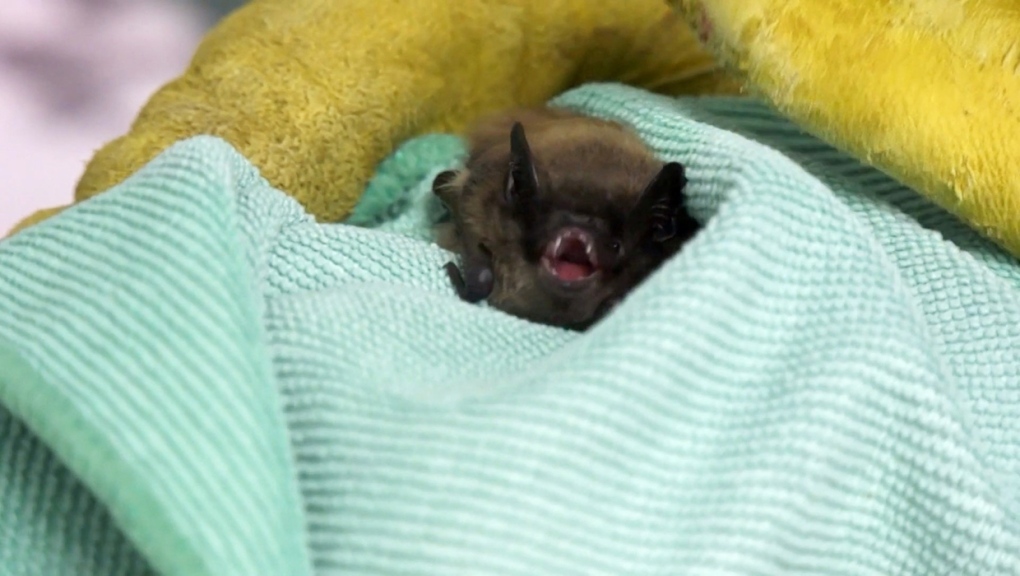Wind turbines lead to decline in bat population
Canada’s three migratory bats are now officially recognized as endangered species.
The eastern red, silver and hoary bats have seen a significant drop in numbers.
Collisions with wind turbines have played a major role in the population decline.
“Wind energy is booming in Alberta as elsewhere and bats and wind turbines don't get along very well. The wind turbines kill a lot of bats. In fact in Alberta it kills more bats than it does birds,” said University of Calgary professor of biological sciences Dr. Robert Barclay.
Wind turbines are a common sight in southern Alberta, taking advantage of the region’s windy conditions.
Bats don’t need to hit a turbine to be killed by one, just getting close can be deadly.
Dr. Cori Lausen, director of bat conservation for the Wildlife Conservation Society Canada, said “all they really have to do is get close to these blades and that's a low pressure zone and that literally causes the blood vessels in their lungs to explode. Sort of like a scuba diver coming up too quickly.”
Between 500,000 and a million bats are killed each year by wind turbines across Canada and the United States.
 Collisions with wind turbines have played a major role in the population decline.
Collisions with wind turbines have played a major role in the population decline.
But because migratory bats travel at night and typically not in large groups, tracking the number of bats in any one region or how many are killed by turbines is challenging.
“It's funny when I get asked questions about how many bats there are,” said Dr. Lausen. “We have a hard time counting trees, and they don't move. So it's been very difficult to estimate bat populations.”
Bats play an essential role in pest control, pollinating plants and dispersing seeds. Fewer bats forces farmers to use more pesticides, which also harms bat populations.
According to experts slowing down turbines in low wind conditions especially at night can help save the bats.
Dr. Barclay said “When the wind speeds are low, shut down the turbines, and see how many fewer bats you kill. In experiments we did with several Alberta companies, (we saw) 50 per cent less fatalities of bats.”
Bats that hibernate are facing their own challenges.
An outbreak of white nose syndrome across North America has killed significant numbers of bats in hibernation roosts.
CTVNews.ca Top Stories

PM Trudeau 'surprised' provinces unanimous on accelerated defence spending: Ford
Ontario Premier Doug Ford says his fellow provincial leaders are united in pushing for Canada to meet its NATO defence spending targets ahead of schedule, and that Prime Minister Justin Trudeau was "surprised" to hear it.
One man dead after shooting in Kitchener tiny home community
One man is dead after an afternoon shooting at 49 Ardelt Ave. in Kitchener.
Heavy snow and numbing temperatures keep parts of the U.S. in a deep freeze
Heavy snowfall and numbing temperatures kept parts of the U.S. in a deep freeze Sunday as the Thanksgiving holiday weekend draws to a close.
Immigrants take to the streets to protest against the freezing of immigration programmes
In response to the freeze on immigration programmes announced by Ottawa, an organization that defends the rights of immigrants is organising a demonstration in front of the Montreal office of the Quebec Ministry of Immigration, Francisation and Integration early on Saturday afternoon.
A man hid 5 treasure chests worth more than US$2 million across the United States. Here’s how to find them
Inside the chests, searchers can look forward to hopefully locating items such as rare Pokémon cards, shipwreck bounty, sports memorabilia, gold and precious medals.
Shopping on Shein and Temu for holiday gifts? You're not the only one.
Welcome to the new online world of impulse buying, a place of guilty pleasures where the selection is vast, every day is Cyber Monday, and an instant dopamine hit that will have faded by the time your package arrives is always just a click away.
'Disappointing': Toronto speed camera cut down less than 24 hours after being reinstalled
A Toronto speed camera notorious for issuing tens of thousands of tickets to drivers has been cut down again less than 24 hours after it was reinstalled.
Canada Post strike threatens holiday fundraising for charities
Charities across Canada are bracing for a tough holiday season as the Canada Post workers’ strike disrupts donation drives and fundraising efforts.
Beef prices reach record highs in Canada
The cost of beef continues to rise, reaching record highs on grocery store shelves ahead of the busiest time for many grocers and butchers before the holiday season.































